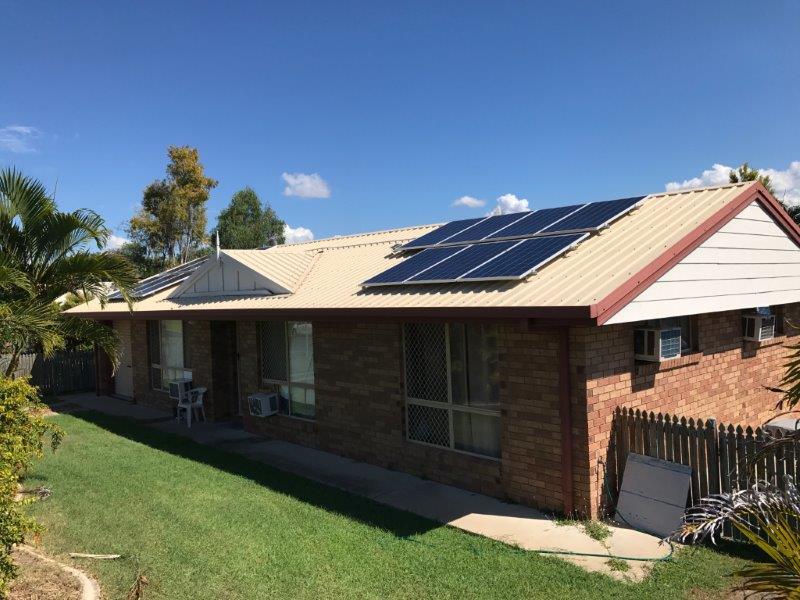The report, titled Renewable Energy Retrofitting and Energy Poverty in Low-income Households, conducted by Swinburne University with the support of United Housing, a community housing provider, reduced the barriers for solar PV adoption for low-income rental tenants in cooperative housing and recorded beneficial results.
The ability to support solar PV installations in rental properties and public housing has proved a quandary to policymakers so far. Earlier this year a group of residents of a Port Melbourne housing estate joined together to put pressure on the Victorian Government to install solar panels, and even battery storage, on the rooftop of every public housing project. With many of these residents elderly, sick or disabled, they spend most of their time at home during the day racking up enormous power bills that rapidly exhaust their pensions.
The Clean Energy Council’s (CEC) Director of Smart Energy Darren Gladman has said that solar coverage on public housing would significantly reduce its cost to the public purse. As I write, the Queensland Government is in the process of a solar panel trail for public housing tenants in Cairns, Rockhampton and Logan.
“The key motivation for low-income households in this study is reducing electricity bills and energy debt,” the study’s researchers reported. The removal of the financial barriers to solar PV adoption was made possible by the housing provider and upfront subsidising by the Victorian government.
The investigation found that the more complex the household, which is to say, the higher the stress of financial and emotional pressure from low-income, single parentage, health conditions or complex family relations, the less likely the household can take control of its energy consumption. Practical measures at reducing electricity consumption require high motivation, such as switching energy providers, changing routines etc., tasks that are often beyond the purview of a household under significant pressure.
Residents who received solar PV installations as part of the investigation reported reduction in electricity bills and credit for excess electricity exported back to the grid. The increased control of energy consumption and reduction in bills meant that households were able to gain the motivation to compound their benefits with better energy management and the confidence to better engage with the energy market. A little help can go a long way.
Findings from the report also suggest that energy management was made easier for low-income households through monitoring and visualising apps which track usage via Solar Analytics energy monitors. “Most participants were open to ways of using technology to take control – however, confidence and skills for using digital technology varied…face-to-face coaching through trusted intermediaries and/or peer-to-per learning is recommended to improve technical capability and energy literacy.”
The report also found that low-income households were particularly susceptible to the effects of shoddy installation jobs. “At least three of the participants experienced installation issues…in one instance this had still not be resolved 10 months after installation.” The study indicated that low-income households require support during installation and afterwards.
The solar industry, led by community groups like Solar Cutters, is making a concerted effort to rectify any likelihood of shoddy installations and unscrupulous installers. The authenticity and enthusiasm of industry community groups like Solar Cutters could prove a handy resource to those at higher risk of falling victim to the kinds of crooked characters present in any industry.
The study found that some of the key obstacles to solar PV take-up for low-income households are low levels of energy literacy, lack of understanding procedures of installation and upkeep. These concerns were worse in households whose first language is not English as they were apprehensive to engage in major changes without trusted intermediaries.
Ultimately, the study recommends that solar PV is excellently suited to social housing “where there is high daytime occupancy rates.” However, the benefits are limited to the tenants understanding of the system and how to maximise its efficiency.
This content is protected by copyright and may not be reused. If you want to cooperate with us and would like to reuse some of our content, please contact: editors@pv-magazine.com.









1 comment
By submitting this form you agree to pv magazine using your data for the purposes of publishing your comment.
Your personal data will only be disclosed or otherwise transmitted to third parties for the purposes of spam filtering or if this is necessary for technical maintenance of the website. Any other transfer to third parties will not take place unless this is justified on the basis of applicable data protection regulations or if pv magazine is legally obliged to do so.
You may revoke this consent at any time with effect for the future, in which case your personal data will be deleted immediately. Otherwise, your data will be deleted if pv magazine has processed your request or the purpose of data storage is fulfilled.
Further information on data privacy can be found in our Data Protection Policy.